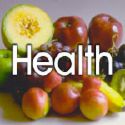Human Blood and Personalies

High Blood Cholesterol
Cholesterol, a yellowish fatty substance, is one of the essential ingredients of the body. Although it is essential to life, it has a bad reputation, being a major villain in heart disease. Every person with high blood cholesterol is regarded as a potential candidate for heart attack or a stroke. Most of the cholesterol found in the body is produced in the liver. However, about twenty to thirty per cent generally comes from the food we eat.
Cholesterol is measured in milligrams per 100 millimetres of blood. The normal level of cholesterol varies between 150 - 200 mg per 100 ml. In blood, cholesterol occurs in combination with certain lipids (fats), hence, known as lipoptroteins. There are two main types of lipoproteins: a low density one (LDL) and a high density one (HDL). The low density lipoprotein is the one which is considered harmful and is associated with cholesterol deposits in blood vessels. The higher the ratio of LDL to the total cholesterol, the greater will be the risk of arterial damage and heart disease. HDL, on the other hand, plays a salutory role by helping remove cholesterol from circulation and thereby reducing the risk of heart disease.
|
Stroke: Remember the first 3 steps
STROKE IDENTIFICATION:
During a party, a friend stumbled and took a little fall - she assured everyone that she was fine (they offered to call paramedics) and just tripped over a brick because of her new shoes. They got her cleaned up and got her a new plate of food - while she appeared a bit shaken up, Prerna went about enjoying herself the rest of the evening. Preran's husband called later telling everyone that his wife had been taken to the hospital - (at 6:00pm , Ingrid passed away.) She had suffered a stroke at the party. Had they known how to identify the signs of a stroke, perhaps Ingrid would be with us today. Some ?don't die. They end up in a helpless, hopeless condition instead.
It only takes a minute to read this...
A neurologist says that if he can get to a stroke victim within 3 hours he can totally reverse the effects of a stroke... totally . He said the trick was getting a stroke recognized, diagnosed, and then getting the patient medically cared for within 3 hours, which is tough.
RECOGNIZING A STROKE
Thank God for the sense to remember the '3' steps, STR . Read and Learn!
Sometimes symptoms of a stroke are difficult to identify. Unfortunately, the lack of awareness spells disaster. The stroke victim may suffer severe brain damage when people nearby fail to recognize the symptoms of a stroke.
Now doctors say a bystander can recognize a stroke by asking three simple questions:
S *Ask the individual to SMILE .
T *Ask the person to TALK , to SPEAK A SIMPLE SENTENCE (Coherently: It is sunny out today.)
R *Ask him or her to RAISE BOTH ARMS .
{NOTE: Another 'sign' of a stroke is this: Ask the person to 'stick' out their tongue... if the tongue is 'crooked', if it goes to one side or the other that is also an indication of a stroke}
If he or she has trouble with ANY ONE of these tasks, call emergency services immediately and describe the symptoms. This is URGENT
|


 city tour
city tour
 Keoladeo tour
Keoladeo tour
 local
attractions
local
attractions 
 Latest News
Latest News
 society N culture
society N culture
 fairs N festivals
fairs N festivals


